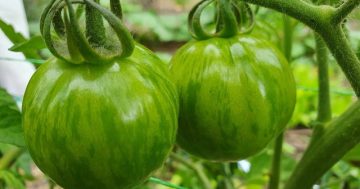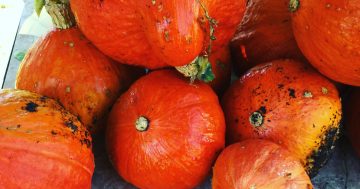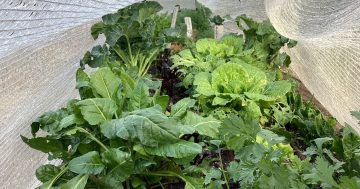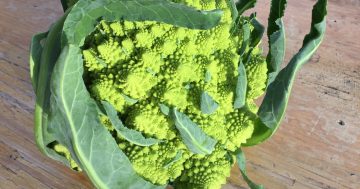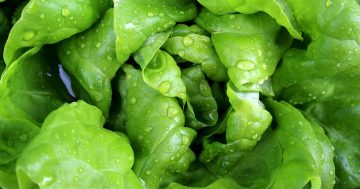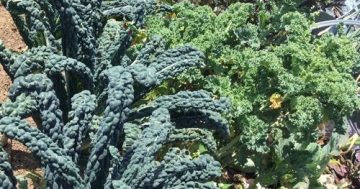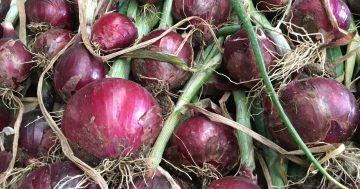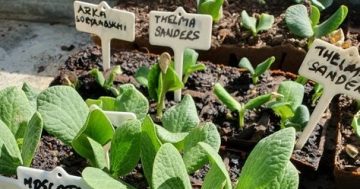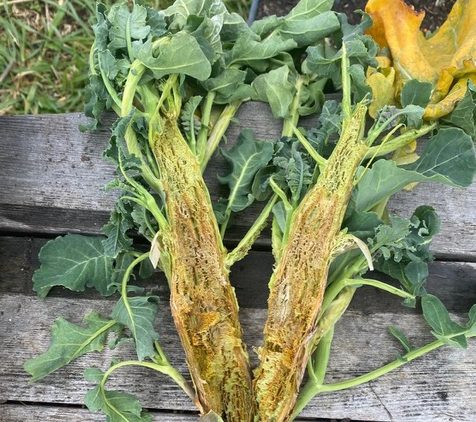
Extremely nutrient-deficient broccoli with secondary stem infection. Photo: Supplied.
There are many jobs to get started in your August vegetable garden. The best get you into lovely winter sunshine, focused on preparations for the coming spring.
Of utmost importance is getting the soil right for drier, warmer weather and planting opportunities ahead. After years of wet weather, a pressing task is to ensure the nutrient balance in your soil is up to scratch.
The constant leaching of nutrients by past rain, if not corrected now, may become obvious once big brassicas begin producing.
Problems such as hollow stems and subsequent disease in cauliflower and broccoli/broccolini can occur, as a result of replacing nitrogen but not addressing shortages of other key nutrients including phosphorous, potassium, sulphur and lesser known elements such as boron.
While nitrogen is most easily lost, and replaced with well composted animal manures, steps to replace other nutrients may not be so obvious. Many gardeners just top beds up with a bagged commercial manure. This is not enough.

Weeds can be a key indicator of soil health. Photo: Supplied.
Planting spaces need to be enriched with both composted manure and compost, but also by providing a range of amendments included in a complete fertiliser, containing lots of micronutrients. Compost is an excellent soil conditioner, containing a range of nutrients, organic matter and biology.
However, we also need to ensure we’re providing macronutrients and trace elements including iron, manganese, zinc, copper and boron are often lacking in common fertilisers.
The easiest way to add nutrients to your garden is granulated kelp. Seaweed is rich in trace elements (nutrients that plants only need small amounts of) and readily available from stockfeed retailers. Apply about a ¼ cup per square metre.
Some weeds in your garden provide a clue to the nutrient balance of your soil. From observing your garden over time you’ll know some weeds persist, reappearing every year, while others come and go.
For example Flat weed (False Dandelion) in “plague” proportions indicates soil low in calcium and very low in potassium with little humus and soil bacterial activity. Add lime/dolomite mix, make a compost tea from comfrey, a seaweed-based foliar spray, or wood ash.
Purslane is another low calcium indicator and also favours low phosphate soils.
Your plants will also tell you if they are desperately short of particular nutrients. Boron is a great example. It is one of the six trace elements needed by plants but is easily leached from soil under rainy conditions, especially when followed by dry conditions.
In fact it is the most widespread micronutrient deficiency, responsible for crop losses and poor quality crops everywhere. If you are growing cauliflowers (or celery), you can see signs of boron deficiency when there are hollow cavities in the stem and the cauliflower head can get a slight bronze tinge.
Weirdly growing leaf tips, curled or wrinkled new leaves, hollow or rough stems in general say “More Boron Please”. Most plants are very tolerant of low boron levels: if you are aware of a deficiency add a ¼ teaspoon of borax, the laundry product. Adding granulated kelp whenever preparing beds should meet boron needs.
The other most leached nutrient is potassium. Potassium shortages show up in a lightening of green colouration in older leaves, yellowing between leaf veins, brown scorching and curling of leaf tips.
Potash classically adds this nutrient. However ensuring micronutrients such as these are not neglected is probably the best approach rather than waiting for a deficiency to show.
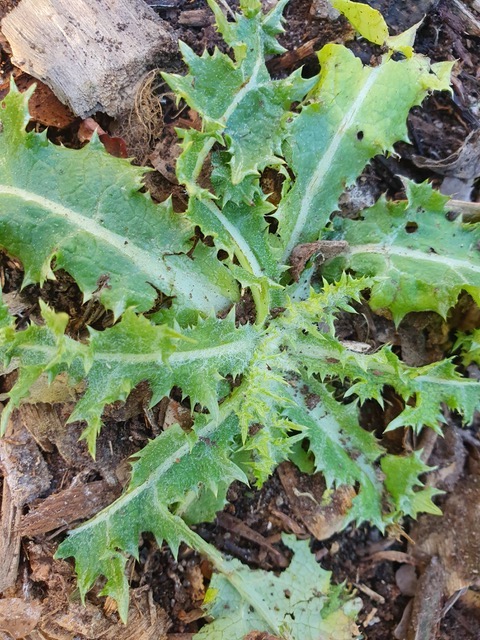
Use weeds and volunteer splits to assess what nutrients your soil needs. Photo: Supplied.
First, good quality compost; second, well composted animal manures; third, granulated kelp or another seaweed-based product; fourth, an organic complete pelleted (slow release) fertiliser; and finally a generous sprinkle of lime/dolomite mix. Use this amendment schedule every time you turn over a bed for new plantings.
There are many seedlings you can plant out in your newly prepared spaces. It’s best to wait until soil temps are above 10 degrees Celsius before direct seeding most plants in the garden.
However sugar snaps, shelling peas and snow peas can all be planted now. Pea flowers are frost sensitive, but a late winter planting means there’s a good chance flowers won’t be affected by frost, ensuring an early summer crop of peas.
Other than peas, beetroot, English spinach, planting out seedlings is still the best way to go at this time of year. Brassicas, Asian greens, lettuces (cos, coral, mignonette, butterhead), rocket and members of the onion family such as leeks, shallots and spring onions included.
Our vegetable garden is producing beautiful winter salads right now of lettuce, rocket, mizuna, radicchio, endive, spring onions, baby English spinach. We’re getting fabulous stir fries of Asian greens and silverbeet and still working our way through the Brussel sprouts!
Bronwyn Richards and Helen Lynch run Wynlen House Artisan Village Farm and Learning Centre, a small village organic market garden in Braidwood, NSW. Since 2006 they have grown and sold fresh vegetables, eggs, preserves and garlic and teach others to do the same.












